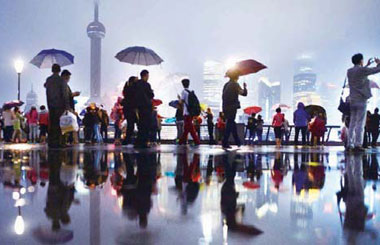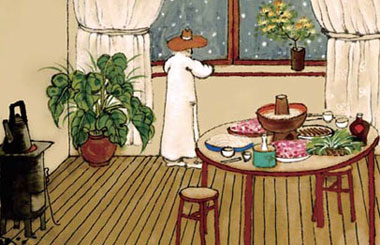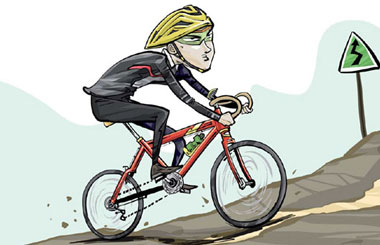Ancient maps show first meeting of East and West
Updated: 2016-03-03 09:57
By LIA ZHU in San Francisco(chinadaily.com.cn)
|
|||||||||
Museum-goers in San Francisco now have the chance to trace the momentous first meeting of East and West to two rare 400-year-old maps jointly crafted by Chinese and European scholars.
The exhibition China at the Center will present Matteo Ricci's A Complete Map of the Ten Thousand Countries of the World (1602) and Ferdinand Verbiest's A Complete Map of the World (1674) at the Asian Art Museum in San Francisco (March 4 through May 8).
The two massive woodblock-printed maps, made for Chinese emperors Wanli of the Ming Dynasty and Kangxi of the Qing Dynasty, are the products of a collaboration of European Jesuit missionaries and Chinese scholars in the 17th century.
Combining European sources as well as the Chinese knowledge of Asia, the maps placed the Americas to the east, and Eurasia and Africa to the west, with China and the Pacific Ocean positioned near the center – evidence that the "Central Kingdom" was only a small part of a larger world.
"The production of these two artifacts bears witness to an openness of mind and heart to those different from ourselves and willing to share knowledge as we explore the world together rather than separately," said M. Antoni J. Ucerler, S.J., co-curator of the exhibition and the director of the Ricci Institute for Chinese-Western Cultural History at the University of San Francisco.
"It's about imagination, it's about accommodating and forming new views of the world from a different perspective within our own perspective," he said.
The Ricci map, which measures roughly 5 by 12 feet, was made by Matteo Ricci (1552–1610), the first Westerner allowed entry into the Forbidden City, in collaboration with Chinese scholars.
The map, printed on paper using intricately carved wood blocks, was the first Chinese map to show the Americas and also the oldest extant map to incorporate both Eastern and Western cartography.
The surface is covered with text, including names and information about the geography of the world and the customs of the people within the regions.
The Ricci map is one of only six complete copies in existence and the only copy in the US. On loan to the Asian Art Museum, it is owned by the James Ford Bell Trust and held at the James Ford Bell Library at the University of Minnesota.
The Verbiest Map, made by Ferdinand Verbiest, is a testament to the power of imagination with fanciful descriptions of exotic flora and fauna, as well as giants, unicorns, mermaids and other mythical creatures referenced in legends from around the world.
The text on the map near Peru, for example, details the region's products and natural resources and also describes a bird (a rhea) that can outrun a horse and whose eggs can serve as a cup. The map also illustrates animals from North America like the turkey, the beaver from Europe and the chameleon from Africa.
On loan from the Library of Congress in Washington, the Verbiest map has never before been exhibited.
The maps didn't get everything right, such as describing California as an island, but they are significant in cultural and historical value.
"The process of producing it together and the unique moments in the East-West cultural history still have much to teach today about dialogue and cooperation," said Antoni, adding that, "We need that so badly today."
Today's Top News
Trump, Clinton scoop up key wins on 'Super Tuesday'
British PM threatened with 'no confidence vote'
70,000 may become trapped in Greece
'Grow people' for long-term China-UK relations
Points of view
Small island makes a big difference
Rubio, Cruz gang up on Trump in debate ploy
'Invented-in-China’ products to the fore at MWC
Hot Topics
Lunar probe , China growth forecasts, Emission rules get tougher, China seen through 'colored lens', International board,
Editor's Picks

|

|

|

|

|

|






